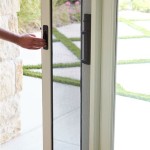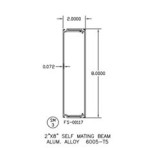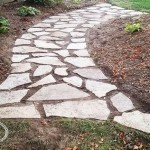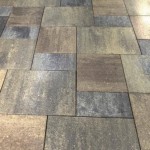Concrete Block Patio Walls: Design, Construction, and Considerations
Concrete block patio walls represent a durable and versatile option for defining outdoor spaces. They offer a balance of affordability, longevity, and aesthetic flexibility, making them a popular choice for homeowners and landscaping professionals alike. This type of wall can serve various purposes, from creating privacy and windbreaks to defining garden beds and outdoor living areas. Understanding the nuances of design, construction, and necessary considerations is crucial for a successful concrete block patio wall project.
The term "concrete block" is frequently used interchangeably with "cinder block," although there is a subtle distinction. True cinder blocks are made with cinders, which are a byproduct of coal combustion. Concrete blocks, however, are manufactured using a mixture of portland cement, water, and aggregates such as sand, gravel, or crushed stone. For patio wall construction, concrete blocks are the standard choice due to their strength and resistance to weathering. These blocks are typically hollow-core, which reduces their weight and material cost, while still providing substantial structural integrity.
Before embarking on a concrete block patio wall project, it is essential to carefully assess the site and plan the wall’s design. Factors such as soil type, drainage, and local building codes can significantly impact the construction process and the wall’s long-term stability. A well-conceived plan will ensure that the finished wall is both functional and aesthetically pleasing.
Planning and Design Considerations
The planning phase of a concrete block patio wall project is crucial for achieving a successful outcome. This stage involves determining the wall's purpose, dimensions, and aesthetic style. Several key factors should be considered during this phase.
First, the intended function of the wall should dictate its design. A wall designed for privacy will likely be taller and more solid than a decorative wall intended to define a garden bed. The wall’s height and length should be carefully considered in relation to the surrounding landscape and any existing structures.
Second, the aesthetic of the wall should complement the existing architectural style of the house and the overall landscape design. Concrete blocks can be left exposed for a utilitarian look, or they can be painted, stuccoed, or faced with stone or brick veneer to create a more refined appearance. The choice of color and texture will significantly impact the wall's visual appeal.
Third, local building codes and regulations must be adhered to. Many jurisdictions require permits for walls exceeding a certain height, and these regulations may specify requirements for foundation depth, reinforcement, and drainage. Failure to comply with building codes can result in fines or the need to dismantle and rebuild the wall.
Fourth, drainage is a critical consideration, especially in areas with heavy rainfall or poor soil drainage. Water accumulating behind the wall can exert significant pressure, leading to structural damage or even collapse. Proper drainage can be achieved through the installation of weep holes, gravel backfill, and a drainage pipe at the base of the wall. The type of soil also affects the base design. In areas with clay-rich soil, expansive pressure can be a concern, potentially requiring a deeper and wider foundation.
Finally, consider the long-term maintenance requirements of the wall. Painted or stuccoed surfaces will require periodic repainting or touch-ups, while exposed concrete block may need to be cleaned periodically to remove dirt and mildew. Selecting durable materials and incorporating features that facilitate maintenance will help to ensure the wall's longevity and aesthetic appeal.
Construction Process: From Foundation to Finishing
The construction of a concrete block patio wall involves several key steps, beginning with the preparation of the foundation and culminating in the finishing of the wall’s surface. Each step requires careful attention to detail to ensure the wall’s structural integrity and aesthetic appeal.
The first step is to excavate the foundation trench. The depth of the trench will depend on the height of the wall, the soil type, and local building codes. Typically, the trench should extend below the frost line to prevent the wall from shifting due to freezing and thawing cycles. The width of the trench should be sufficient to accommodate the foundation footing, which should extend beyond the width of the concrete blocks.
Next, the foundation footing is poured. This is typically a concrete slab reinforced with steel rebar. The rebar provides added strength and stability to the foundation, preventing cracking and settling. The concrete should be allowed to cure for several days before proceeding with the next step.
Once the foundation has cured, the first course of concrete blocks can be laid. This is a critical step, as it establishes the base for the entire wall. The blocks should be laid on a bed of mortar, ensuring that they are level and aligned. A mason's level and string line can be used to ensure accuracy. Subsequent courses of blocks are then laid, with each block staggered to create a strong, interlocking pattern. Mortar is applied between each block to create a tight seal.
As the wall is constructed, vertical and horizontal reinforcement may be necessary, depending on the height of the wall and local building codes. Vertical reinforcement typically involves inserting rebar into the hollow cores of the blocks and filling the cores with concrete. Horizontal reinforcement may involve the use of bond beams, which are special concrete blocks with a channel for rebar. These beams are laid horizontally at regular intervals to provide added stability.
Once the wall has reached the desired height, the top of the wall can be capped with concrete caps or coping stones. These not only provide a finished look but also help to protect the wall from water damage. The caps should be securely attached to the wall with mortar.
Finally, the surface of the wall can be finished to achieve the desired aesthetic. Options include painting, stuccoing, or applying a stone or brick veneer. Painting and stuccoing are relatively simple and cost-effective options, while applying a veneer can create a more upscale and refined appearance. The choice of finish will depend on the desired aesthetic and budget.
Addressing Potential Issues and Long-Term Maintenance
Even with careful planning and construction, concrete block patio walls are susceptible to certain issues over time. Identifying potential problems early and implementing preventative measures can help to ensure the wall’s longevity and minimize the need for costly repairs. Regular maintenance is also critical for preserving the wall’s aesthetic appeal.
One common issue is cracking. Cracks can develop due to settling of the foundation, expansion and contraction caused by temperature changes, or water damage. Small cracks can often be repaired with mortar. Larger cracks may require more extensive repairs, such as injecting epoxy resin to seal the crack and reinforce the wall. In severe cases, it may be necessary to replace damaged blocks or sections of the wall.
Another potential problem is water damage. Water can seep into the concrete blocks, causing them to deteriorate over time. This can be exacerbated by freeze-thaw cycles, which can cause the water to expand and contract, leading to cracking and spalling. Proper drainage is crucial for preventing water damage. Ensure that weep holes are clear and that the drainage system is functioning properly. Applying a sealant to the surface of the wall can also help to protect it from water damage.
Efflorescence, a white, powdery deposit that can appear on the surface of concrete blocks, is another common issue. Efflorescence is caused by soluble salts migrating to the surface of the concrete and reacting with carbon dioxide in the air. While efflorescence is generally harmless, it can be unsightly. It can be removed with a stiff brush and a solution of water and vinegar or a commercial efflorescence cleaner.
Regular cleaning is essential for maintaining the aesthetic appeal of the wall. Dirt, mildew, and algae can accumulate on the surface of the concrete blocks, especially in damp or shaded areas. The wall can be cleaned with a power washer or a scrub brush and a solution of water and detergent. For stubborn stains, a bleach solution may be necessary. However, it is important to use bleach sparingly and to rinse the wall thoroughly to prevent damage to surrounding plants or landscaping.
Finally, periodic inspections of the wall are recommended to identify any potential problems early. Look for cracks, water damage, efflorescence, or any other signs of deterioration. Addressing these issues promptly can help to prevent minor problems from escalating into more serious and costly repairs. By following these guidelines for addressing potential issues and implementing long-term maintenance, homeowners can ensure that their concrete block patio walls remain functional and aesthetically pleasing for many years to come.

Concrete Block Sitting Wall Idea Gallery Sacramento Ca

Concrete Block Sitting Wall Idea Gallery Sacramento Ca

Planning And Building A Concrete Block Retaining Wall

Modern Cinder Block Wall Design Parallel Rows Of Burnished Concrete Walls Are Tied Together With P Landscaping Outdoor

From Boring Concrete Wall To Pretty Painted Patio The Palette Muse

Mid Century Modern Patio Project In Twin Cities Mn Ground One

Painted Concrete Wall Patio Decorating Ideas Garden Cinder Block Retaining Walls

From Boring Concrete Wall To Pretty Painted Patio The Palette Muse

How To Build A Raised Patio With Retaining Wall Blocks

How To Build A Raised Patio With Retaining Wall Blocks
Related Posts








